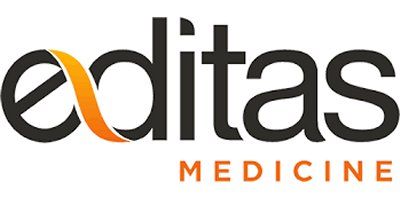

- Home
- Companies
- Editas Medicine
- Products
- Model EDIT-301 - Ex Vivo Gene Editing ...
Model EDIT-301 - Ex Vivo Gene Editing Cell Medicines
EDIT-301 is an experimental cell therapy medicine under investigation for the treatment of severe sickle cell disease (SCD) and transfusion-dependent beta thalassemia (TDT). EDIT-301 consists of patient-derived CD34+ hematopoietic stem and progenitor cells edited at the gamma globin gene (HBG1 and HBG2) promoters, where naturally occurring fetal hemoglobin (HbF) inducing mutations reside, by a highly specific and efficient proprietary engineered AsCas12a nuclease. Red blood cells derived from EDIT-301 CD34+ cells demonstrate a sustained increase in fetal hemoglobin production, which has the potential to provide a one-time, durable treatment benefit for people living with severe SCD and TDT.
SCD and beta thalassemia are serious hematologic diseases that continue to have unmet medical needs. In the US alone, there are 90,000 to 100,000 people living with SCD. We have developed a potentially best-in-class treatment, known as EDIT-301, for these diseases that utilizes CRISPR/Cas12a to edit the beta-globin locus and directly increase fetal hemoglobin.
About Sickle Cell Disease
- A disease that affects the shape and function of the body’s red blood cells, the cells that carry oxygen throughout the body
- In SCD, the red blood cells are misshapen, in a sickle shape instead of the disc shape. The abnormal shape causes the cells to block blood flow causing pain and early death
- There are an estimated 100,000 people in the United States currently living with SCD
- Usually begins in early childhood. Early symptoms include:
- Low red blood cell counts
- Infections
- Pain
- Fatigue
- Delayed growth and development
- The current standard of care is to manage symptoms and complications; there are currently no approved treatments for SCD
About Beta thalassemia
- A blood disorder that reduces the body’s production of hemoglobin, a protein that carries oxygen to all of the body’s cells
- Classified into 2 types based on severity of the disorder:
- Thalassemia major (more severe; also known as Cooley’s anemia)
- Thalassemia intermedia (less severe)
- Thousands of babies around the world are born with this disorder each year
- The symptoms and age where they start are different for each type of beta-thalassemia. General symptoms include:
- Low red blood cell counts and anemia
- Growth problems
- Bone abnormalities
- In more severe cases: yellowing of the skin and eyes and delayed puberty
